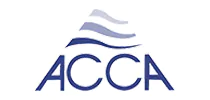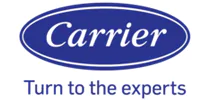There’s nothing more frustrating on a sweltering Pennsylvania summer day than stepping outside only to find your outdoor AC fan sitting idle. When that crucial component goes quiet, your entire cooling system grinds to an inefficient halt – leaving you sweating it out indoors. Whether it’s an electrical glitch, mechanical failure, or something more complex, a non-spinning fan demands immediate investigation before minor inconveniences spiral into major repair bills.
This guide walks through the most common culprits behind outdoor fan stoppages for homeowners in Bucks County and Chester County. We’ll cover some basic DIY troubleshooting techniques worth trying first, plus indicators when professional HVAC assistance becomes an absolute necessity. Because no one wants to be caught suffering through a prolonged air conditioning crisis during those brutal summer heat waves. Stay cool and take control by pinpointing that outdoor fan issue quickly!
Understanding the Basics of Outdoor AC Fans
That outdoor condenser unit houses one of your air conditioning system’s most critical components – the condensing fan. This powerful fan serves two vital roles in facilitating proper heat transfer for interior cooling.
First, it draws air across the condenser coils filled with refrigerant vapor discharged from the compressor. As air flows over those coil surfaces, it removes thermal energy – causing the refrigerant to condense back into liquid form. Essentially, it expels the heat your AC extracted from indoors back outside where it belongs.
Secondly, the condensing fan generates an airflow that exhausts this hot air away from the unit. This air displacement prevents humid conditions from forming around the condenser coils which can drastically reduce their heat shedding efficiency. Proper fan operation proves crucial for maintaining ideal temperature differentials.
Most condenser fans consist of a blade assembly directly powered by an electric motor mounted alongside the coil assembly. Fan blades spin at high RPMs to generate the fast airflow needed for condensing and exhaust functions. Should this fan mechanism fail or get obstructed, your entire cooling system falters.
While outdoor fans prove remarkably durable, their consistent summertime operation in harsh weather conditions eventually leads to deterioration over years of use. Dirt and debris accumulation can impede blade rotation. Bearings gradually seize up. Electrical connections loosen and components corrode. Once condensing fans slow or cease operation entirely, your AC’s core cooling cycle quickly gets thrown out of whack.
The first step in addressing any air conditioning woes involves inspecting this outdoor fan for signs of trouble. Let’s examine some common condensing fan afflictions next.
Common Causes for a Non-Spinning AC Fan
Even the most robust outdoor condensing fans eventually succumb to operational hiccups preventing proper rotation. Let’s dive into some of the most frequent culprits behind that dreaded still air – from electrical gremlins and mechanical failures to good old-fashioned gunk buildup.
Electrical Issues
Your AC’s condensing unit relies on a consistent flow of electrical power to energize that fan motor. But any disruptions in that voltage supply can bring the whole system screeching to a halt. Tripped circuit breakers, blown fuses, frayed wiring, and loose connections all qualify as potential showstoppers. Corrosion on electrical terminals provides another common impediment as units age too. While some of these fixes merely require a reset, others point to more serious electrical faults demanding professional attention. Always exercise caution around live currents.
Capacitor Problems
That condensing fan motor receives an extra electrical kick from a run capacitor providing torque for startup and stable operation. As these cylindrical components degrade over years of use and heat exposure, they become less effective at supplying adequate voltage. A weak or failed capacitor leaves motors starved for power, causing erratic operation or complete shutdowns. Visual signs like bulging, leaking, or burned terminal connections indicate replacement needs. Fortunately, capacitors prove relatively inexpensive parts.
Motor Malfunctions
Of course, the fan motor itself represents the literal heart of your AC’s outdoor unit, pumping life into your unit’s heat transfer process. But those hardworking motors won’t spin forever. Excessive vibration can loosen bearings causing mechanical bind. Winding issues stemming from electrical shorts or overheating insulation pose another common failure mode. And once those critical centrifugal switch components burn out, motors lack the oomph for reliable startups. At that point, replacing the entire motor assembly becomes the most cost-effective solution.
Fan Blade Issues
While the motor provides rotational power, the fan blades themselves facilitate essential airflow volumes. But these blade assemblies must remain rigidly balanced and unobstructed for peak performance. Blades cracked, bent, or missing from impact damage significantly diminish their aerodynamics. The same goes for excessive buildup from environmental debris weighing down smooth rotation. Pitting and corrosion compromise blade integrity too. Neglecting fan blade repairs allows the operation to deteriorate progressively.
Debris and Obstructions
Speaking of environmental contamination, dirt, leaves, twigs, and other detritus regularly accumulate around that outdoor unit over time. As these obstructions pile up, they start interfering with normal fan blade rotation. Grass clippings getting sucked against protective grilles make matters worse. Weigh removing any shrubbery in close proximity as well to maximize airflow clearance. This basic cleaning process often resolves cases of impeded blade spinning.
Thermostat Problems
Don’t overlook that humble indoor thermostat unit in your fan troubleshooting either! If it provides a faulty reading signaling cooling needs, your condensing unit may not receive the necessary activation prompt. Erratic programming after power outages, dead batteries, excessive dust, and misadjusted anticipators can all send mixed signals disrupting normal operations. Cycling that thermostat to cool mode and ensuring proper settings provide a quick fix in some instances.
While individual components eventually succumb to wear and tear, a little proactive maintenance helps keep your condensing fan – and entire cooling system – performing smoothly for years. Stay on top of these common operational hiccups through regular inspection and cleaning. It beats sweating out a costly major repair!
DIY Troubleshooting Tips
While professional HVAC technicians possess the training and expertise to properly diagnose complex condensing fan failures, savvy homeowners can actually resolve some basic issues themselves first. A bit of hands-on troubleshooting proves worthwhile before escalating to service calls – potentially saving you both time and money. Just remember to exercise caution and avoid any situations compromising your safety around electrical components or refrigerant lines.
Power Cycling the Unit
One of the simplest DIY tactics involves giving your outdoor condensing unit a hard reset by cutting electrical power completely. Start by locating the corresponding circuit breaker in your home’s main service panel and flipping it to the “off” position. Then, turn off the AC unit via its disconnect box directly on the condenser housing. Allow everything to fully power down for 5-10 minutes before restoring electricity. This reboot process helps clear any erratic signals or overload conditions that may be disrupting normal functions.
Clearing Debris and Obstructions
Don’t underestimate the havoc yard detritus like grass clippings, twigs, and leaves can wreak once it starts clogging your condenser unit’s fan grilles and coil fins. Trim back any shrubbery providing ample clearance first. Then, using a brush or portable vacuum, carefully clean out any visible buildup surrounding the fan intake and discharge areas. Check for obstructions interfering with blade rotation too. This simple preventative maintenance task eliminates a frequent culprit behind poor airflow.
Inspecting Capacitors
Those condensing unit capacitors tend to visually advertise any operational issues. Carefully examine the cylindrical bodies for signs like bulging, leaking oil, or corroded terminal connectors – all indicators of impending failure. You can usually replace run capacitors fairly easily yourself by decoupling the push-on terminal leads and swapping in an identical replacement from the hardware store. But closely follow any safety guidance for properly discharging residual electrical charge first.
Stabilizing Electrical Connections
Over months and years of enduring weather exposure, wiring connections can gradually loosen and oxidize – compromising electrical flow to components. Try stabilizing any wiggly conduit cables using cable ties and disconnecting then re-terminating any visibly degraded wires.
Lubricating Motor Bearings
If your condensing fan motor mounts contain accessible lubricating ports, a few drops of non-detergent electric motor oil can work wonders for restoring smooth bearing operation. These rotating assemblies rely on proper lubrication to prevent premature wear and potential seizing. Check your unit’s manual for any specific lubricating guidance first. You’ll likely need to fully dismount the motor to properly access internal bearings in some cases too.
Always start with the simplest DIY measures first whenever your AC’s outdoor fan sputters or stalls out. Sometimes just stabilizing electrical connections and clearing debris provides an easy fix before more expensive repair needs arise. But know your limits – anything compromising your safety merits calling in the HVAC experts instead.
When to Seek Professional Help
Homeowners can certainly handle basic preventative maintenance and minor troubleshooting for outdoor condensing fan issues. But certain scenarios inevitably arise where attempting further DIY repairs proves impractical or downright hazardous without proper training. Knowing when to wave the white flag and call in professional HVAC technicians prevents minor inconveniences from snowballing into costlier nightmares.
Electrical Hazards
While resetting breakers and tightening loose wiring connections represent reasonable DIY steps, anything involving direct contact with live electrical current demands leaving it to the pros. Risking severe shocks or potential electrocution just isn’t worth the gamble for amateur homeowners. The same applies to any wiring replacement needs within sealed outdoor units where you can’t easily identify all power sources. Let certified technicians with proper protective equipment handle those electrical repairs safely.
Refrigerant Line Concerns
Those condenser coils snake refrigerant lines filled with chemical refrigerant vapor/liquid back inside your evaporator unit. Any visible damage, leaks, or obstructions in those copper lines point to serious systemic issues requiring expert diagnostics and repairs. Attempting DIY fixes risks releasing those refrigerants into the environment or cross-contaminating line sets – both ecological no-nos. Professionals utilize specialized recovery equipment and EPA-approved procedures to properly flush and reseal cooling systems.
Capacitor Precautions
While relatively basic components, those condensing unit capacitors still store enough residual electrical charge to deliver potentially harmful zaps – even after disconnecting power sources. Most HVAC techs follow strict safety protocols for discharging that latent voltage before handling capacitors to avoid shocks. They also size and install perfect capacitor replacements to restore precise motor torque requirements. Not worth the electrocution risks for DIYers.
Compressor Failures
Compressors represent your air conditioning system’s hardworking heart continuously circulating refrigerant throughout those coils. Once those massive components burn out, replacing them requires intricate refrigerant line disconnections, aspiration procedures, and comprehensive system evacuations/charging that shouldn’t be attempted solo. Improper compressor swaps quickly lead to premature failures from acid buildup, impurities, and intermixing of incompatible refrigerant blends. Avoid shortcuts by trusting professionals.
Motor Burnouts
While relatively straightforward components, diagnosing and replacing those condenser fan motors still requires some specialized electrical know-how that most homeowners lack. You’ll need to properly assess winding resistance values, benchmark normal operating current draws, and determine any root causes like failed run capacitors. Professionals come equipped with motor testing instruments and comprehensive cross-reference resources for sizing ideal replacements. Avoid installation mismatches creating new problems.
When facing any scenarios potentially compromising your safety or risking further system damage, prudent homeowners should have no reservations about requesting professional assistance. Prioritize personal well-being and adequate system repair over adventurous amateur fixes. A reputable HVAC contractor’s expertise prevents you from sweating out small issues becoming big-dollar problems down the line. Invest in the peace of mind!
Preventative Maintenance Tips
While calling in the professionals proves wise when major condensing fan issues arise, homeowners can take some proactive preventative steps themselves to keep outdoor units operating smoothly for years. A little routine maintenance goes a remarkably long way in terms of extending performance life and avoiding many of those common operational hiccups entirely.
Consistent Coil Cleaning
Those condenser coils lined with aluminum fins can’t effectively expel thermal energy when excessively caked with dirt, pollen, and other airborne particles. Using a coil cleaning wand with a gentle detergent spray helps flush away buildup at least annually. For tackling stuck-on grime, invest in a fin-comb tool designed for safely straightening bent coil fins back into alignment. Maximizing exposure to smooth airflow drastically improves heat transfer.
Filter Replacements
Speaking of air circulation, routinely replacing those disposable HVAC air filters provides a remarkably cost-effective preventative measure. Clogged filters completely choke off system airflow leading to excessive thermal strain – the nemesis of condensing fan motors and compressor longevity. Plan on checking filters monthly, cleaning reusable versions, and replacing disposables quarterly minimum.
Unit Clearances
Over weeks and months of operation, those outdoor condenser fans inevitably become victim to plant overgrowth, lawncare debris, and miscellaneous clutter accumulation. Maintaining at least a three-foot radius of open clearance around units prevents airflow obstructions that can impair fan blade rotation. A little scheduled yard grooming goes a long way!
Fan Motor Protection
Direct sunlight beating down on those condensing fan motors accelerates component degradation – whether temperatures rise or units ice over. Installing a simple awning or compressor blanket provides ample shielding without restricting airflow. You can also apply fresh motor shaft grease annually. These simple protective steps fend off premature failures.
Electrical Stabilization
Loose wiring connections create voltage arcing issues shorting out components left and right. Homeowners can easily stabilize conduit runs using zip ties while deoxidizing and re-terminating any corroded wire ends. Running a bead of electrical-grade silicone sealer around wire entrances prevents moisture penetration too. Little preventative steps make a big difference!
By simply adhering to a disciplined outdoor unit maintenance schedule, homeowners can proactively eliminate many frequent headaches. It ultimately extends that condensing fan system’s operational longevity.
Expert Recommendations for Long-Term Efficiency
Of course, no amount of preventative maintenance fully replaces the need for periodic professional service calls either. Only experienced HVAC technicians trained in the latest cooling technologies can comprehensively analyze system performance – quickly identifying any developing issues homeowners easily overlook.
Seasonal Tune-Ups
Most reputable contractors offer discounted tune-up packages helping homeowners maximize year-round efficiency and equipment longevity. During these comprehensive inspections, technicians thoroughly clean and calibrate every component while checking refrigerant charge levels. They verify all electrical operations and sequence system cycling too. These meticulous multi-point inspections catch developing faults before they blossom into systematic breakdowns.
Load Calculations
As home additions or major renovations extend square footage over time, that initial air conditioning installation may no longer prove sufficient for effective cooling. Professionals utilize software to calculate precise heating/cooling load requirements based on the latest construction factors and insulation values. Right-sizing replacement systems maximize energy efficiency while eliminating prolonged runtimes straining components.
Ductwork Evaluations
Those condensing fans rely on properly sealed and insulated ductwork distributing cooled air consistently to every room without leakage. Compromised ducts create imbalanced airflow leading to excessive backpressures, lukewarm airstreams, and hot/cold spots. Technicians use specialized diagnostic tools to pinpoint any duct kinks, cracks, or disconnections restricting efficient exchange.
Smart Thermostat Upgrades
Let’s not overlook the humble thermostat’s influential role either! Upgrading to intelligent Wi-Fi models allows for automating temperature setbacks when away from home while monitoring performance data remotely. Technicians ensure proper integration calibrating thermostat communications with HVAC systems. The system analytics help pinpoint any operational inconsistencies quickly too.
System Replacements
Despite the most meticulous maintenance efforts, condensing fan components inevitably reach their performance expiration date after 10-15 years of steady use. At that point, technicians recommend complete system replacements leveraging the latest efficiency-maximizing technologies like variable-speed motors and multi-stage compressors. The short-term investment delivers exponential long-term savings in terms of lower utility costs.
By partnering with a reputable HVAC contractor for turnkey installation and ongoing professional maintenance services, homeowners can reap maximum value from their cooling systems season after season. Those condensing fans will keep reliably spinning for decades facilitating efficient, comfortable living! Don’t settle for anything less than peak performance.
Achieving Reliable Cooling Comfort for the Long Haul
When outdoor AC issues leave you perspiring, Christian stands ready to restore that refreshing air flow quickly. As a family-owned business founded in 1989, we’ve established over 35 years of unmatched expertise in keeping local families comfortable year-round. Our trained technicians adhere to the highest standards of integrity, innovation, and knowledge in tackling any condensing fan dilemma.
Don’t let a non-spinning outdoor unit derail your cooling relief this summer. Christian’s team combines comprehensive diagnostics with thoughtful repair recommendations optimizing long-term efficiency. We employ the latest tools ensuring everything from loose electrical connections and capacitor replacements to condensing fan motor swaps get executed flawlessly. Our workmanship brings you reliable performance you can count on.
Reclaim that consistent home cool by calling our trusted HVAC professionals today at (215) 488-5795. With Christian Heating & Air Conditioning LLC on your side, you can feel confident inviting the area’s most dedicated specialists into your home. Book now to get that condensing fan spinning smoothly again!



